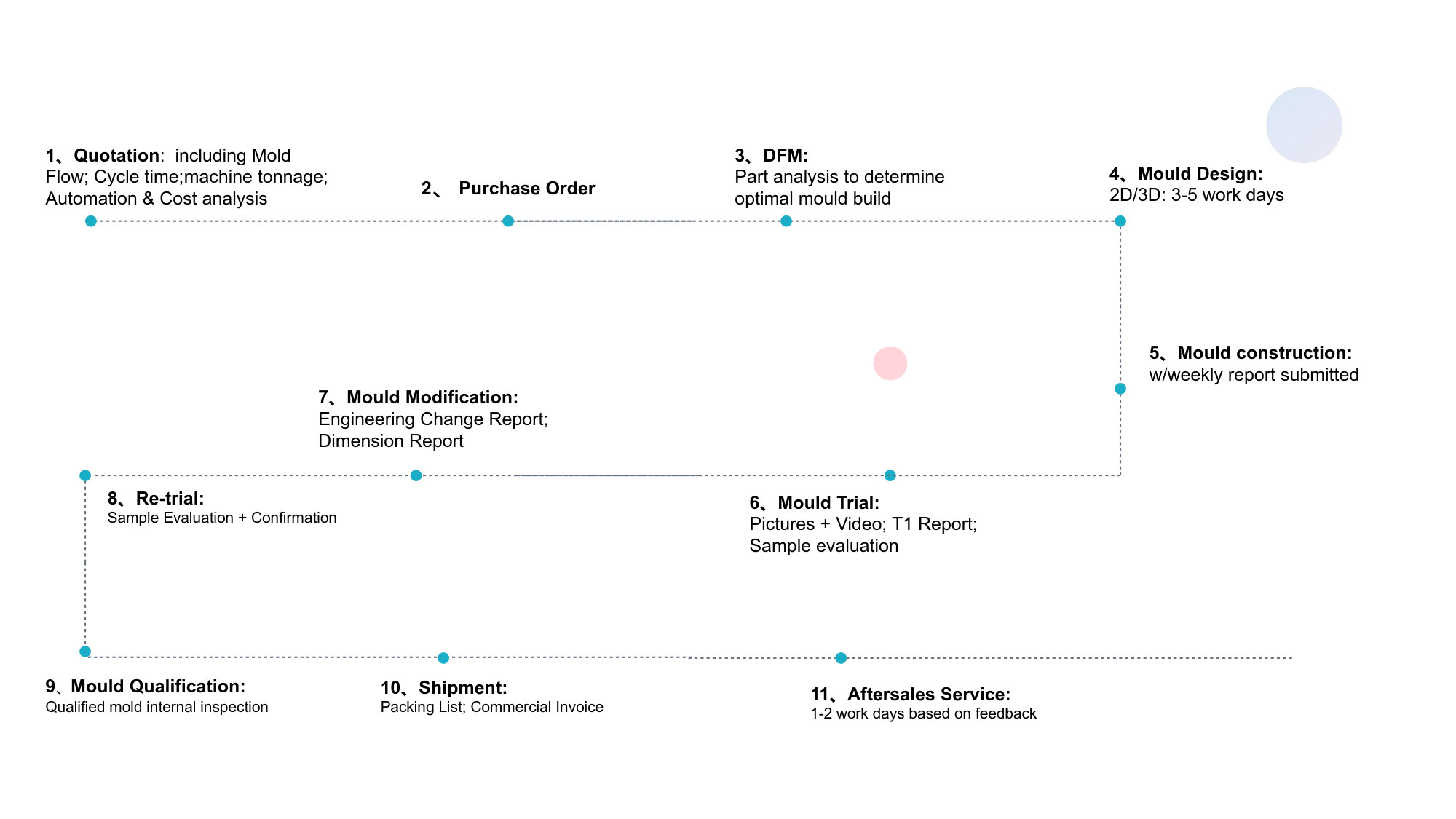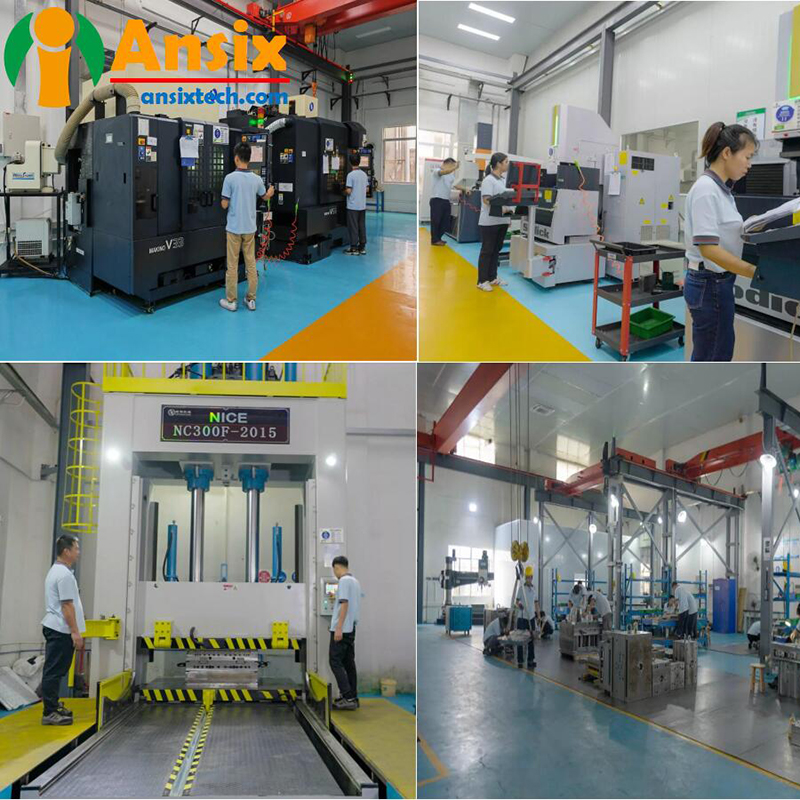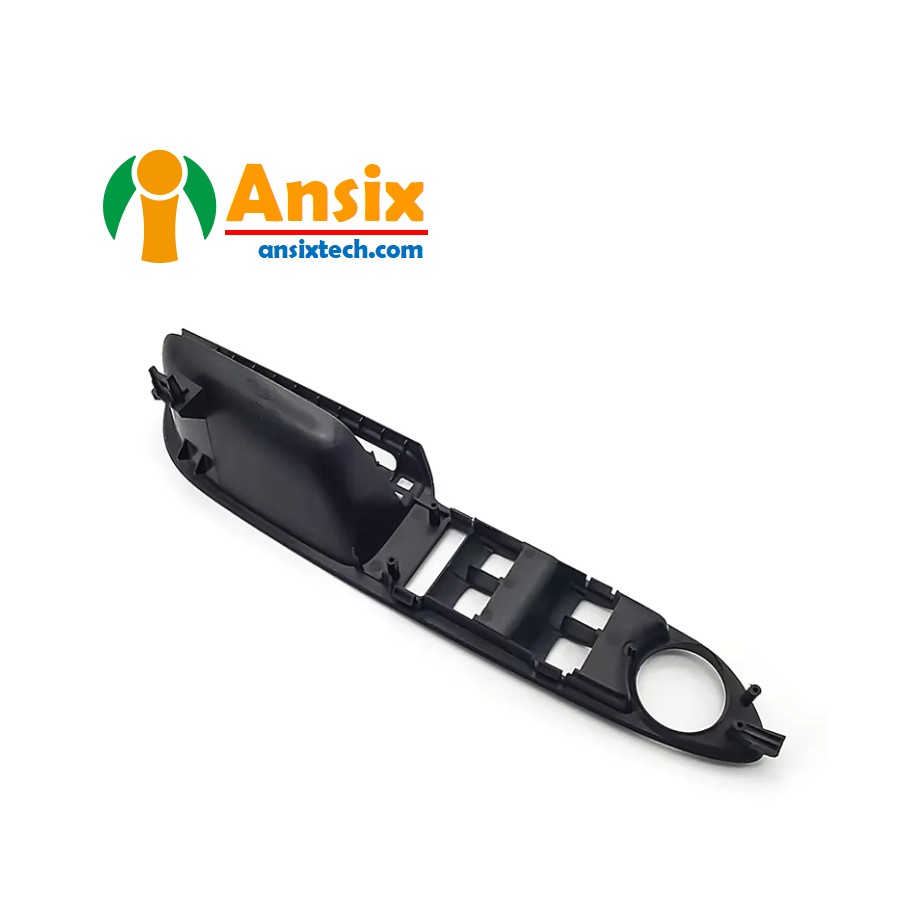Door Trim Panel Automotive Interior Injection Schimmel
FEATURES
- Door Trim Panel Automotive Interior Injection Schimmel
Mold maintenance: Mold maintenance and upkeep are very important for the long-term use and performance stability of the mold. Clean, lubricate and repair the mold regularly, and replace worn parts in time to extend the service life of the mold.The manufacturing of automotive interior door trim plastic molds requires experienced engineers and technicians to ensure the accuracy and stability of the molds. The quality and performance of the mold directly affect the quality and efficiency of injection molding. Therefore, relevant mold manufacturing standards and quality requirements need to be strictly observed during the manufacturing process..Please send us a message(Email: info@ansixtech.com ) at any time and our team will reply to you within 12 hours.
-
Mold Description
Product Materials:
PP
Mold Material:
S136ESR
Number of Cavities:
1+1
Glue Feeding Method:
Cold runnerCooling Method:
Water cooling
Molding Cycle
33.5s

- Door Trim Panel Automotive Interior Mold flow analysis and mold designThe design and mold flow analysis of automotive interior door trim molds are very important links in automotive interior manufacturing.Design of automotive interior door trim mold:a. Collect relevant information about the door trim, including size, shape, material, etc.b. According to the design requirements of the door trim panel, design the mold, including mold cavity, mold core, demoulding system, cooling system, etc.c. Ensure that the accuracy and size of the mold meet the requirements to ensure the quality and stability of the door trim.Mold flow analysis of automotive interior door trim mold:a. Use mold flow analysis software to import the CAD model of the door trim panel, and set the injection molding process parameters, such as injection speed, temperature, pressure, etc.b. Conduct mold flow analysis to simulate the melt flow, filling, cooling and other processes during the injection molding process to evaluate the filling performance, bubbles, short shots and other defects of the door trim, and optimize the injection molding process parameters.Design of demoulding system: According to the shape and requirements of the door trim, design a suitable demoulding system to ensure that the door trim can be demoulded smoothly and avoid damage and deformation.In summary, the design and mold flow analysis of automotive interior door trim molds require mold design, optimization of injection molding process parameters, and mold flow analysis. Through reasonable design and control, high-quality automotive interior door trim panels can be obtained.


- Door Trim Panel Automotive Interior The mold manufacturing process and product material selectionThe manufacturing and processing of automotive interior door trim molds and part material selection:Mold manufacturing and processing:The car armrest button cover mold processing procedure usually includes the following steps:1. Mold design: First, carry out the mold design of the car armrest button cover, including product structure design, mold structure design, injection molding system design, etc. Designers need to design a reasonable mold structure based on the shape, size and functional requirements of the product.2. Material preparation: Selecting the appropriate mold material is crucial to the quality and life of the mold. Common mold materials include tool steel, carbide, etc. The selection of materials should take into account factors such as the use environment of the mold, processing technology and cost.3. Mold processing: Mold processing usually includes CNC machining, EDM, wire cutting and other processes. CNC machining is one of the main methods of mold processing, which can achieve high-precision and high-efficiency processing. EDM and wire cutting are suitable for processing high-hardness, high-precision mold parts.4. Mold assembly and debugging: After the mold processing is completed, the mold needs to be assembled and debugged. This includes assembly of mold parts, debugging and testing of molds, etc.5. Raw material pretreatment: The selected plastic raw material is pretreated, usually the granular plastic raw material is heated and melted to facilitate injection molding.6. Injection molding: Inject the preheated plastic raw material into the mold cavity through the screw of the injection molding machine. Under certain pressure and temperature conditions, the plastic raw material fills the mold cavity and forms the shape of the product.7. Cooling and solidification: Cooling in the mold for a period of time allows the plastic raw materials to solidify and form.8. Take out the product: Open the mold and take out the formed car armrest button cover product.9. Trimming and post-processing: Trim the product, remove excess material, remove flash and other post-processing processes.10. Quality inspection: Conduct quality inspection on the formed products. This includes dimensional measurement, visual inspection, functional testing, etc. to ensure that the product meets customer requirements and standards.11. Packaging and shipping: Products that pass quality inspection are packaged and prepared for shipment.The selection of cover plastic materials usually requires consideration of factors such as product appearance requirements, wear resistance, and high temperature resistance. Common cover plastic materials include:1. ABS: It has good strength and toughness, is oil-resistant, wear-resistant, and high-temperature resistant, and is suitable for making durable cover products.2. PC (polycarbonate): It has excellent heat resistance and impact resistance, high transparency, and is suitable for cover products that require transparent or translucent products.3. PP (polypropylene): It has good wear resistance and chemical stability, and is suitable for making wear-resistant cover products.4. PA (nylon): It has good wear resistance and corrosion resistance, and is suitable for cover products that require wear resistance.The above are the general car armrest button cover mold processing procedures and common cover plastic materials. In actual production, it is also necessary to select appropriate mold materials and cover plastic materials according to specific product requirements and use environment.Part material selection:Select the appropriate injection molding material according to the requirements of the door trim. Commonly used materials include PP, ABS, PC, etc.Considering the appearance requirements, wear resistance and high temperature resistance of the door trim, choose materials with good mechanical properties and durability.PP (polypropylene) is a commonly used injection molding material with good toughness, chemical resistance and heat resistance, and is suitable for manufacturing automotive interior door trim panels.During the automotive interior door trim mold manufacturing and parts material selection process, you need to pay attention to the following points:Surface treatment of the mold: According to the requirements of the door trim panel, perform appropriate surface treatment, such as grinding, polishing, etc., to improve the surface quality and smoothness of the door trim panel.The manufacturing and processing of automobile interior door trim molds and the selection of part materials require the selection of appropriate processing techniques and equipment, and the selection of materials with good mechanical properties, high temperature resistance and wear resistance, such as PP. Through reasonable processing and control of injection molding process parameters, high-quality automotive interior door trim panels can be achieved.
- Door Trim Panel Automotive Interior Mass production and Quality controlThe injection molding mass production of automotive interior door trim panels involves aspects such as efficiency, cost, tooling and quality control.Efficiency:Mold injection molding production can achieve high efficiency production. By using molds for injection molding, a large number of products can be produced in a short time and production efficiency can be improved.Automated production can further improve production efficiency. Equipped with automated injection molding machines and robot systems, it can realize automated production processes, reduce manual operations and improve production efficiency.Cost:Although the cost of mold manufacturing is higher, in mass production, the cost of the mold can be allocated to each product, thereby reducing the production cost of the unit product.Mold injection molding production can also reduce manual operations and reduce the scrap rate, further reducing production costs.Workwear:Proper design of tooling fixtures can improve production efficiency and quality stability. According to the shape and requirements of the door trim, design appropriate tooling fixtures to ensure the fixation and positioning of the injection molded parts.Quality control:Establishing a complete quality control system can ensure product quality. Including quality inspection, process control and defective product handling to ensure that products meet quality standards.In the mass production process of automobile interior door trim injection molding, factors such as efficiency, cost, tooling and quality control need to be comprehensively considered. Through reasonable tooling design, optimization of production processes, cost control and the establishment of a quality control system, high-efficiency, low-cost, and high-quality mass production of automotive interior door trim injection molding can be achieved.



